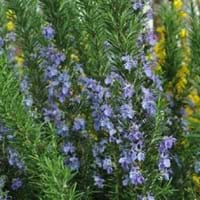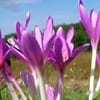Life Span
Perennial
Perennial
Type
Bulb or Corm or Tuber
Herbs
Origin
Mediterranean, Turkey
Southern Europe, Mediterranean
Types
Not available
Arp Rosemary, Gorizia Rosemary, Lockwood de Forest Rosemary, Salem Rosemary
Number of Varieties
Not Available
Habitat
Lawn, meadows, Sunny Edge, Woodland Garden
Dry areas, Open scrub
USDA Hardiness Zone
6-9
8-11
Sunset Zone
21,22
H1, H2, 4, 5, 6, 7, 8, 9, 10, 11, 12, 13, 14, 15, 16, 17, 18, 19, 20, 21, 22, 23, 24
Habit
Clump-Forming
Oval or Rounded
Flower Color
Fuchsia, Rose
Blue Violet
Flower Color Modifier
Bicolor
Bicolor
Fruit Color
Not Available
Not Available
Leaf Color in Spring
Green
Sea Green
Leaf Color in Summer
Light Green
Sea Green
Leaf Color in Fall
Several shades of Green
Sea Green
Leaf Color in Winter
Light Green
Light Green
Leaf Shape
Long Broad
Needle like
Plant Season
Spring, Fall
Spring, Summer, Fall, Winter
Sunlight
Full Sun, Partial Sun
Full Sun
Type of Soil
Loam
Loam, Sand
The pH of Soil
Acidic, Neutral
Neutral, Alkaline
Soil Drainage
Well drained
Well drained
Bloom Time
Late Summer, Early Fall
Early Spring, Spring, Late Spring, Late Winter
Tolerances
Drought
Drought
Where to Plant?
Container, Ground, Pot
Container, Ground, Pot
How to Plant?
Corms or bulbs, Seedlings
Seedlings, Stem Planting
Plant Maintenance
Low
Medium
Watering Requirements
Do Not over Water, Keep the ground moist but not water-logged
Do not water frequently, Does not require lot of watering, It cannot sustain wet-feet, Never Over-water, Requires watering in the growing season, Water when soil is dry, when new, water every week
In Summer
Lots of watering
Lots of watering
In Spring
Moderate
Moderate
In Winter
Average Water
Average Water
Soil pH
Acidic, Neutral
Neutral, Alkaline
Soil Type
Loam
Loam, Sand
Soil Drainage Capacity
Well drained
Well drained
Sun Exposure
Full Sun, Partial Sun
Full Sun
Pruning
Cut or pinch the stems, Remove damaged leaves, Remove dead flowers, Remove dead leaves
Prune for shortening long shoots, Prune if you want to improve plant shape, Prune regularly, Prune to control growth, Requires extensive pruning
Fertilizers
All-Purpose Liquid Fertilizer, fertilize in summer
All-Purpose Liquid Fertilizer
Pests and Diseases
Slugs
Mealybugs, Powdery mildew, Root rot, Scale, Spider mites, Whiteflies
Plant Tolerance
Drought
Drought
Flower Petal Number
Single
Single
Fragrant Bark/Stem
No
Yes
Foliage Texture
Coarse
Fine
Foliage Sheen
Not Available
Matte
Attracts
Bees, Butterflies
Bees
Allergy
poisonous if ingested, Toxic if not prepared properly
Skin rash, Vomiting
Aesthetic Uses
Beautification, Cottage Garden, Showy Purposes
Beautification, Showy Purposes
Beauty Benefits
Removes pimples
Not Available
Environmental Uses
Air purification
Air purification
Medicinal Uses
Arthritis, Gout, Itching
Antioxidants, Cough, Gastrointestinal disorders, Heartburn, High blood pressure, Indigestion
Part of Plant Used
Bulbs, Flowers, Seeds
Flowers, Leaves
Other Uses
Used as Ornamental plant, Used for its medicinal properties
Air freshner, Oil is used for aromatherapy, Oil is used in perfume, soaps, creams, etc., Showy Purposes, Used as a spice
Used As Indoor Plant
No
Sometimes
Used As Outdoor Plant
Yes
Yes
Garden Design
Alpine, Container, Mixed Border, Rock Garden / Wall
Container, Edible, Hedges, Herb / Vegetable, Mixed Border, Topiary / Bonsai / Espalier
Botanical Name
Colchicum autumnale
ROSMARINUS officinalis 'Tuscan Blue'
Common Name
Autumn Crocus, meadow saffron, naked lady
Rosemary, Tuscan Blue Rosemary
In Hindi
शरद ऋतु का पौधा
टस्कन ब्लू दौनी
In German
Herbstzeitlose
Tuscan Blau Rosmarin
In French
colchique d'automne
Toscane Bleu Rosemary
In Spanish
cólquico
Toscana azul Romero
In Greek
φθινόπωρο κρόκος
Τοσκάνης Μπλε Rosemary
In Portuguese
aftomn gema
Tuscan Azul Rosemary
In Polish
aftomn żółtka
Toskańskie Niebieski Rosemary
In Latin
aftomn vitellus
Tusci Rosemary blue
Phylum
Magnoliophyta
Magnoliophyta
Class
Liliopsida
Magnoliopsida
Family
Liliaceae
Lamiaceae
Genus
Colchicum
Rosmarinus
Clade
Angiosperms, Monocots
Not Available
Tribe
Colchiceae
Not Available
Subfamily
Not Available
Not Available
Importance of Autumn Crocus and Tuscan Blue Rosemary
Want to have the most appropriate plant for your garden? You might want to know the importance of Autumn Crocus and Tuscan Blue Rosemary. Basically, these two plants vary in many aspects. Compare Autumn Crocus and Tuscan Blue Rosemary as they differ in many characteristics such as their life, care, benefits, facts, etc. Every gardener must at least have the slightest clue about the plants he wants to plant in his garden. Compare their benefits, which differ in many ways like facts and uses. The medicinal use of Autumn Crocus is Arthritis, Gout and Itching whereas of Tuscan Blue Rosemary is Antioxidants, Cough, Gastrointestinal disorders, Heartburn, High blood pressure and Indigestion. Autumn Crocus has beauty benefits as follows: Removes pimples while Tuscan Blue Rosemary has beauty benefits as follows: Removes pimples.
Compare Facts of Autumn Crocus vs Tuscan Blue Rosemary
How to choose the best garden plant for your garden depending upon its facts? Here garden plant comparison will help you to solve this query. Compare the facts of Autumn Crocus vs Tuscan Blue Rosemary and know which one to choose. As garden plants have benefits and other uses, allergy is also a major drawback of plants for some people. Allergic reactions of Autumn Crocus are poisonous if ingested and Toxic if not prepared properly whereas of Tuscan Blue Rosemary have Skin rash and Vomiting respectively. Having a fruit bearing plant in your garden can be a plus point of your garden. Autumn Crocus has no showy fruits and Tuscan Blue Rosemary has no showy fruits. Also Autumn Crocus is not flowering and Tuscan Blue Rosemary is not flowering . You can compare Autumn Crocus and Tuscan Blue Rosemary facts and facts of other plants too.





